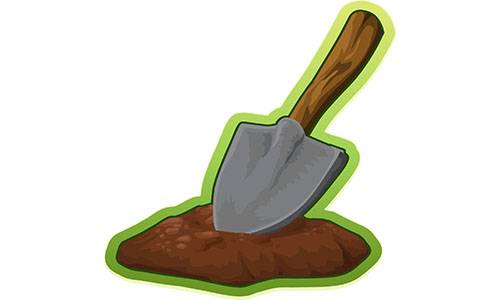

Digging is one of the most basic tasks in gardening tools. Since humans gave up using their hands to help dig, the tools people use to turn and move soil have become more diverse in design and more specialized in their use.
Knowing the range of digging tools available and what each is designed for will help you choose the right Excavation tools for the job.
1. Shovels and spades
Despite what most people think, a shovel and a spade are not the same things. The main difference lies in the shape of the leading edge.
A shovel with its rounded edge and body is better suited to moving material from one place to another, although you can certainly use it to dig in soft soil.
The square edge of the shovel allows you to cut into the soil by putting your foot on its back edge, pulling back on the handle like a lever, and then turning the soil over.
2. Shovel
Basically a miniature shovel, the spade is a palm-sized tool that is perfect for small digging tasks.
You can use it to make short seed trenches, dig holes for small plants, remove weeds with shallow roots or plant bulbs.
They usually have a sharp end that faces the cut and some can even measure how deep you have dug.
3. Garden forks or spade forks
Garden forks are mainly used for tilling and aerating the soil. They are particularly useful for breaking up thick clay soils.
Not to be confused with forks, which have slender rounded tines for moving straw, and spades, which have flat or square tines and are very strong.
The best forks have at least four tines and a sturdy D-shaped handle. Buy the sturdiest one you can afford to get long-lasting value.
4. Pick and Matoke
This tool is designed for serious digging in hard, packed soil. Often referred to as a pick, it has a double-sided metal head perpendicular to the handle.
The pointed side of the pick is used to break the soil, while the wide side of the mattock is used to chop into the ground. The curved shape of the head allows the tool to be used as a lever to lift the soil or to pry out rocks.
5. The hoe
Often thought of more as a weeding tool, the hoe’s vertical metal blades make it ideal for digging out rows of soil or forming trenches.
Hoes come in a variety of blade shapes. The pointed, heart-shaped hoe blade is best suited to digging long trenches. Hoes with square blades are suitable for loosening the soil and digging out the roots of weeds.
Triangular-shaped hoes, on the other hand, break up thick, compacted soil and are also suitable for light digging in narrow places.

